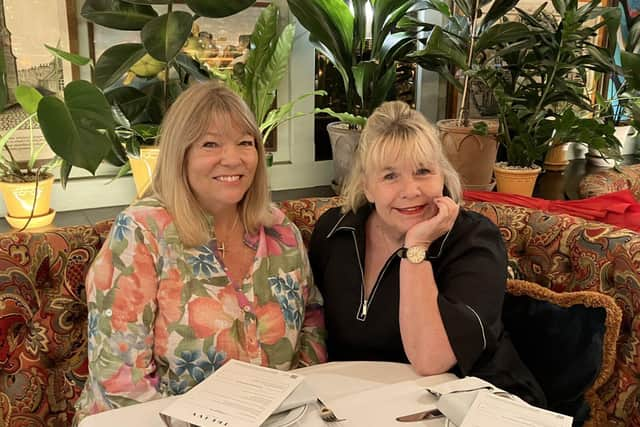The Aisle File
and live on Freeview channel 276
Peak proposal time falls between Christmas and Valentine’s Day, with engagements often triggered by couples attending weddings during the preceding summer. So if you’re thinking of saying ‘I do,’ read on, because as wedding celebrants we see it all. And we have plenty of tips for ensuring that YOUR wedding is as meaningful, relevant and, crucially, comfortable.
Going to the chapel (or not)
If you want a faith-based wedding, a place of worship is the appropriate venue for you to marry. If it’s a secular ceremony you’re after, or you just wish to fulfil the legalities of marriage, a licensed venue where a Registrar will officiate does the job. But if you want a ceremony that is designed and written exclusively for you, with no time or content restrictions, you need a Celebrant. While you will still have to fulfil the legalities of marriage with the Registrar (many couples do this the week before their celebrant-led ceremony), a Celebrant will help you design and create a unique and personalised ceremony. There are moves afoot to review the centuries-old wedding laws; potentially licensing celebrants and thereby giving all couples the opportunity to marry in a way that is meaningful and relevant to them. But in the meantime, if you want a bespoke ceremony, research Celebrants in your area – we’re always up for a no-obligation chat.


Nail your non-negotiables
Advertisement
Hide AdAdvertisement
Hide AdWeddings can be expensive and, unless you have unlimited funds, you’ll need to spend wisely. So in the first instance, identify the things that you don’t want to compromise on. Whether it’s the award-winning photographer or the designer dress, by nailing your non-negotiables early on, you can work out where to trim your spending.
And remember: making, borrowing or buying second hand are brilliant budget-shavers, so tap into your resources and identify the bargain hunters and Pinterest ninjas in your circle.
Shop local
It’s an all-round win: shopping local for all things wedding boosts the local economy, often includes free delivery, and, crucially, reduces your carbon footprint. Shockingly, the average carbon footprint of a UK wedding equates to more than the average annual footprint of a household. So share the local love.
Beware pinchy pants and toe torture!
Pretty bridal lingerie may be easy on the eye, but it can be really uncomfortable. We cannot stress this enough: test drive undies before the wedding. It’s a long day and being comfortable is essential. Plus, there’s nothing quite as mortifying for a bride than a photo of her desperately trying to rearrange a wedgie. And remember too that Shape Wear can also be highly impractical for going to the loo.
Advertisement
Hide AdAdvertisement
Hide AdAs for shoes, wear them in to avoid blisters. And sandpaper the soles to minimise the risk of making an unscheduled skid down the aisle.
Tradition or Twist?
Weddings are rich in tradition. Some people like to include one or two of these, while others like to add their own twist to wedding rituals, or even invent one of their own.
Brolly good: It is considered lucky if it rains on your wedding day. Why? Well, a knot that becomes wet is extremely hard to untie. Therefore when you ‘tie the knot’ on a rainy day, your marriage is supposedly just as hard to untie.
Tip: ALWAYS have a ‘B’ plan for an outdoors wedding in the UK, or add ‘bring a brolly’ to your invitations.
Advertisement
Hide AdAdvertisement
Hide AdPelted by petals: The word confetti comes from the Italian for ‘confectionary.' Historically sweets were thrown, however these were gradually replaced by rice and grains, to represent wealth and fertility. Colourful paper was the next incarnation of this tradition, but, more environmentally friendly, petals and now the confetti norm. Kinder to the planet and less painful for the couple than being shelled with candy.
Tip: Use petals gathered from family gardens for a personal touch.
Girls in white dresses: Originally, brides in the UK would simply wear their best clothes. It wasn’t until Queen Victoria married Prince Albert in an ivory-white gown that white wedding dresses became a fashionable. Old Queen Vic was quite the trendsetter!
Tip: If you mum or granny still has their dress, think about using it to make something for your wedding wardrobe – a garter made from veil lace, or hankies for the groomsmen made from a satin puddle train.
Advertisement
Hide AdAdvertisement
Hide AdPut a ring on it: The custom of exchanging wedding rings goes back to Old Egypt, where a circle symbolised eternity. Ancient Egyptians wore wedding rings on the left finger of the left hand, as they believed the ‘vena amoris’ (the vein of love) began here, leading all the way to the heart.
Tip: a ring warming ritual, when the rings are passed from person to person during the ceremony, is a lovely way to involve your guests.
Giving a toss: A peculiar tradition during the 15th century in Britain saw guests trying to tear bits off the bride’s dress, flowers or hair, believing that grabbing a piece of the bride’s outfit would bring them good luck. However, the guests could get very rowdy, so a tradition evolved whereby the bride would simply toss her flowers at the mob and run for her life!
Tip: Instead of chucking your bouquet, chuck this tradition and keep the blooms for yourself!
Advertisement
Hide AdAdvertisement
Hide AdThe Icing on the Cake: Back in the 17th century, white icing on a wedding cake symbolised the bride's virginity, as well as being an indicator of her folk’s wealth. The thicker the icing, the richer her family! Nowadays, ‘naked’ cakes are on trend. Make of that what you will!
Tip: Go rogue and kick out the traditional cake in favour of a cheese castle, brownie tower or a pastry pylon.
Further information about celebrant-led ceremonies:
www.spotonceremonies.co.uk (Vicky) www.erikabcelebrant.co.uk (Erika)